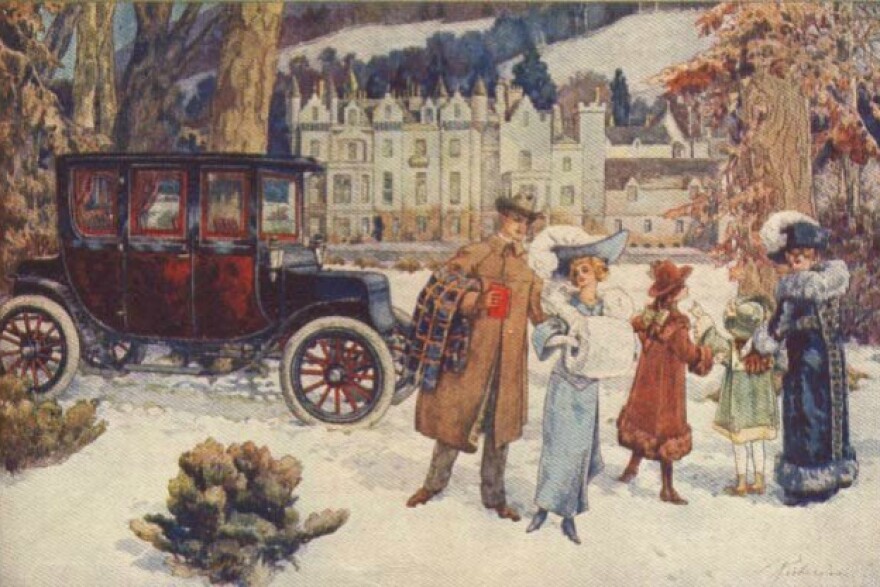By the Staff of the Indiana Magazine of History
Archive: January 6, 2014
For a brief period in the early history of the American auto industry, electric cars competed with gasoline-fueled vehicles. Not until the energy-conscious 21st century would electric cars and hybrid vehicles reappear as popular alternatives for auto-loving Americans.
During the 1890s, at the height of the bicycle craze in the United States, the Indiana Bicycle Company produced a model known as the Waverley bicycle. In 1898, the re-named Waverley Company of Indianapolis produced its first automobile: the Electric Stanhope, a two-person buggy powered by a patented battery which provided riders with a 40-mile range and a top speed of 14 mph. Two years later, the company joined with the American Bicycle Company, which was producing its own Columbia electrical car.
The Waverley Company continued to produce electric-powered vehicles until 1914. One 1912 ad for the firm’s “Silent Limousine-Five” touted the benefits of electrical propulsion: no noise, no smoke or odor from a gasoline engine, and no “spattered oil” to worry about. The car was designed to resemble an elegant carriage—the ad harkened back to the “famous Town Chariot of France, used in the period of the first empire.” The marketing was directed at both men and women. A cutaway illustration at the top of the ad revealed five people seated in the elegant interior: a male driver in evening coat and top hat, and four women dressed in beautiful evening gowns. The ad proclaimed: “Delicate Gowns Not Marred In This Roomy Electric. Your party for reception, theater or ball, may number five adults, yet no gown will be marred or even crushed.”
Gasoline propulsion claimed the day, and the Waverley Electric car went the way of its innovating fellows. Today we can recognize the foresight of early engineers and designers who were literally a century ahead of their time.
Source: www.autolife.umd.umich.edu



